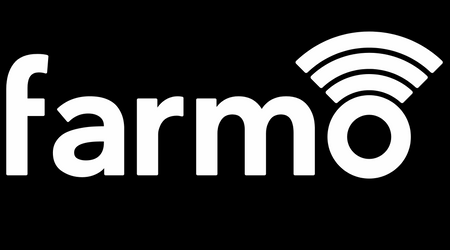We first wrote this article in 2021 and things have already changed so much it needed an update in 2023.
The right technology for your farm is dependent on the geography, the available network coverage and the things you want to measure. The current options include LoRaWAN, NB-IoT and Satellite.
The quadrant chart below is a guide to help you think about the options. Each technology has different characteristics but they all do the same thing, i.e. get the data from the sensor to your phone or computer.
In the final result the data will be identical no matter how it got there, which means the best option is often a mix of technology. For example, a farm might put up a LoRaWAN gateway that covers 80% of the farm, and fill in the black spots with some NB-IoT devices.

1. LoRaWAN
LoRaWAN is a communication technology designed for low power, low data devices. It allows up to 100 sensors devices to connect to a single gateway up to 15km away by line of sight. Buildings, trees, and deep gullies will reduce the transmission distance achieved and it may be only 1-2 kms in some areas.
An essential part of the LoRaWAN system is the gateway, which receives data from all the sensors, and then sends this data to the cloud.

LoRaWAN messages transmit very small amounts of data and are not designed for sending movies or CCTV. LoRaWAN sensors can be expected to last years in the field before the battery requires changing. However, if your gateway is far away the sensors uses more power per transmission and the battery will not last as long.
Also note that battery life is directly related to how often data is sent. So if all other things are equal, the battery on a tank sensor transmitting levels twice a day will last 12 times as long as the same device transmitting every hour.

The main benefit of LoraWAN is the lower running costs per device if you install own gateway and invest time into it as a DIY project. If you use a private LoRaWAN service, the costs are higher.
2. NB-IoT (Narrowband IoT)
NB-IoT (Narrowband IoT) sensors use the same Telstra/Optus towers that that connect your mobile phone.
Due to the lower frequency and longer latency, coverage for NB-IoT is up to 30km more from the tower than the 4G network. So if your mobile phone works on the site, you can assume NB-IoT devices will work. The penetration through buildings and cement tanks is better with NB-IoT than with 4G and LoRaWAN.
NB-IoT sensors work out of the box if within range of network coverage. They require a low cost IoT SIM card in each device, which will be covered by some type of subscription payment.
The main benefit of NB-IoT is that there is no need to setup and maintain a gateway like LoRaWAN. You simply purchase the device, insert a SIM into it and it will automatically connect (assuming you have 4G coverage in that area).
3. Satellite
If you are really remote and don't have any cellular coverage and need to monitor across vast distances then Satellite is your best option. Data from the sensor goes directly to the satellite in the sky.
There are 2 main types of satellite connectivity: The older style Geostationary satellites approximately 35,000 kilometres high in the sky, and the pizzaboxes, or LEO satellites whizzing around a few hundred kilometres above the earths surface. The LEO satellite (e.g. Starlink) have less distance to send the data so can get much lower latency and higher internet speeds.
The emergence of Starlink is leading to more Wi-Fi hotspots on farms and we will likely see more more Wi-Fi enabled sensors in the future.
Summary
Thats a very quick update that will soon be out of date. There are mixed-mode devices coming that will connect to a cell tower when in range and then find a LEO satellite when out of cellular coverage. As a device maker we love this... one piece of hardware to suit almost everyone on the planet!
Whatever technology you choose, the data your device sends and the data that you receive is the same. It doesn't matter how it gets there, just that it gets there. So choose the one that can do the job required at the lowest cost (including your own time).





